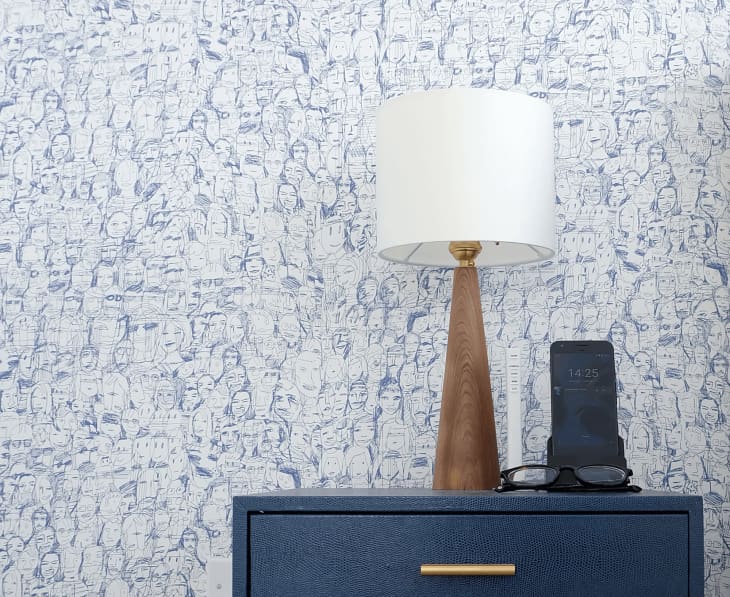I Learned a Crazy Thing About Wallpaper While Playing HQ Trivia

If you don’t live under a rock, you’re probably familiar with HQ, the real-time, multi-player trivia game broadcast live over your phone each day. I tried it out last month for the first time and have played a handful of times since. Last weekend, before getting eliminated about 4 or 5 questions in, I learned a very interesting thing about wallpaper.
If you’re not familiar, the show airs weekday at 3pm and 9pm (and at 9pm on weekends). The series host, Scott Rogosky, asks a series of twelve multiple choice questions which you try to answer in under ten seconds each. Answer one wrong and you’re eliminated. Get all twelve responses right and you share a pot of money with other winners (typically $2,000 total). All the while, there’s a stream of viewer comments running down below, ranging from “Happy Birthday Mom!!!!” to “Flbbrjjbeete.” You get the gist.
HQ burst onto the scene last year and — although clearly tapping into some deep-seated cultural craving —also has a somewhat rocky history. It’s regularly plagued with technical issues, including lags that cause players to miss out on questions. (Did anyone else find themselves shouting at their frozen screen, “Sade is pronounced Sha-dé! Sha-dé!!!!!” a couple of weeks ago?) There are complaints about players cheating with Google and accounts of creepy/hostile behavior by company’s founders. And most recently, conservative Peter Thiel invested capital in the HQ, prompting a social media campaign for viewers to #boycotthq. Controversy aside, it remains to be seen if this game is the genius start of some brand new and revolutionary programming, or if it’s just a flash in the pan that will soon peter out and die (and probably become a random trivia question on some other trivia show in the future).
All this has absolutely nothing to do with how bad I am at it. I actually love trivia, and — if the wind is right and there are only tennis-related sports questions — am somewhat decent at it. I even have a whole stack of cruise swag to prove my reign as trivia queen of the Alaska-bound Royal Princess back in July of 2008. But there’s something about this format that’s difficult for me. Is it the speed? The trivial-ness of the trivia? Or my reluctance to go online to learn how to win free lives? I don’t know. All this to say I’ve had my share of “duh” moments, even on the total boner questions.
Which brings me to this past weekend, when a question popped up about wallpaper. I write for Apartment Therapy, and regularly do makeovers involving, yes, wallpaper. So, in the fraction of a second I had to get excited, I did. Surely this was my moment to shine and regain my Princess Cruises glory. The question was something along the lines of, “What well-known material was originally developed as wallpaper?” I had no idea, and guessed polyester, which was totally wrong. The correct answer was —wait for it — bubble wrap.
Here’s what Mental Floss had to say about that back in November 16, 2012 on the subject, on what is apparently National Bubble Wrap Appreciation Day (and incidentally, also my birthday).
In 1957, engineer Al Fielding and Swiss inventor Marc Chavannes were trying to create a textured wallpaper. To do so, they sealed two shower curtains together in such a way that air bubbles were captured, giving the wallpaper a textured appearance … It wasn’t until three years after the origination of their invention that Frederick W. Bowers, a marketer at Sealed Air, which made the product, finally came up with the perfect use for it. On October 5, 1959, IBM had announced their new 1401 variable word length computer. Bowers got the idea that Bubble Wrap could be used as a good packaging material to protect the computer while it was being shipped. He pitched the idea to IBM and demonstrated Bubble Wrap’s protective abilities. His demonstration went over well, and IBM began purchasing Bubble Wrap to protect their 1401 and other fragile products they sold and shipped.
So, there you have it. Bubble wrap started out as wallpaper. Who knew? I certainly didn’t.